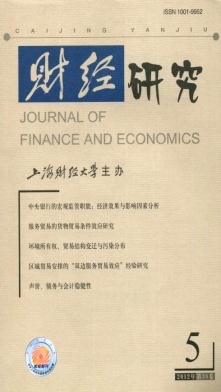产权信念及其对公平偏好与自利偏好的挤出
财经研究 2012 年 第 38 卷第 05 期, 页码:95 - 105
摘要
参考文献
摘要
传统经济理论将产权作为经济绩效的外生变量,但是人类社会的演化路径表明产权是内生于人类族群的共同信念,它与内置于人类心智的公平偏好交互作用影响个体的决策行为。文章运用比较制度实验方法针对不同来源的产权考察其认同信念及其对公平偏好的影响。实验发现,产权不仅导致提议者对回应者和接受者有产权认同信念,也导致提议者的自利偏好和回应者的公平偏好被挤出;通过对利他偏好、策略行为和第三方评价的分离,测度了产权信念;提议者没有强烈的公平偏好动机,而是通过策略行为来最大化自身利益。
[1]李晓义,李建标.互惠、信任与治理效率———基于比较制度实验的研究[J].南开经济研究,2009,(1):101-121.
[2]夏纪军.中国的信任结构及其决定———基于一组实验的分析[J].财经研究,2005,(6):39-51.
[3]汪丁丁.产权博弈[J].经济研究,1996,(10):70-80.
[4]Barzel Y.Economic analysis of property rights[M].England:Cambridge UniversityPress,1989.
[5]Camerer C F.Behavioral game theory[M].Princeton:Princeton University Press,2003.
[6]Camerer C F,Loewenstein G,Prelec D.Neuroeconomics:How neuroscience can informeconomics[J].Journal of Economic Literature,2005,(43):9-64.
[7]Demsetz H.Toward a theory of property rights[J].American Economic Review,1967,57(2):347-359.
[8]Güth W,Eric van Damme.Information,strategic behavior and fairness in ultimatumbargaining:An experimental study[J].Journal of Mathematical Psychology,1998,(42):227-247.
[9]Kahneman D,Knetsch J L,Thaler R H.Fairness and the assumptions of econo-mics[J].Journal of Business,1986,(59):285-300.
[10]Leliveld M C,Van Dijk E,Van Beest I.Initial ownership in bargaining:Introducingthe giving,splitting,and taking ultimatum bargaining game[J].Personality&SocialPsychology Bulletin,2008,34:1214-1225.
[11]Schmid A A.Property,power,and public choice:An inquiry into law andeconomics[M].2nd ed.New York:Praeger,1987.
[12]Swope K,Cadigan J,Schmitt P,et al.Social position and distributive justice:Experi-mental evidence[J].Southern Economic Journal,2008,74(3):811-818.
①Güth等(1982)最早设计最后通牒实验,Forsythe等(1994)最早设计独裁者实验。
②这一框架最早由Güth等(1998)采用。
③实验设定了最低分配额,所以提议者无法拿走全部钱数。
④目的是确保每轮实验不同类型只有一次相遇。
⑤若未做特殊说明,显著性水平为5%。检验程序为:首先进行K-S非参数检验,然后用ANOVA处理正态分布数据;否则用M-W U或K-W进行非参数检验。
⑥实验设置指分钱设置为零,拿钱设置为1,然后进行数据回归分析。
⑦信息差异是指不同被试类型的提议值在不同的信息条件下的差异性。
⑧实际市场效率为(拒绝后的提议值总和/总分配额)×100%,即88.9%=(54次提议-6次拒绝)×120G$54次提议×120G$,98.2%=(54次提议-1次拒绝)×120G$54次提议×120G$。
[2]夏纪军.中国的信任结构及其决定———基于一组实验的分析[J].财经研究,2005,(6):39-51.
[3]汪丁丁.产权博弈[J].经济研究,1996,(10):70-80.
[4]Barzel Y.Economic analysis of property rights[M].England:Cambridge UniversityPress,1989.
[5]Camerer C F.Behavioral game theory[M].Princeton:Princeton University Press,2003.
[6]Camerer C F,Loewenstein G,Prelec D.Neuroeconomics:How neuroscience can informeconomics[J].Journal of Economic Literature,2005,(43):9-64.
[7]Demsetz H.Toward a theory of property rights[J].American Economic Review,1967,57(2):347-359.
[8]Güth W,Eric van Damme.Information,strategic behavior and fairness in ultimatumbargaining:An experimental study[J].Journal of Mathematical Psychology,1998,(42):227-247.
[9]Kahneman D,Knetsch J L,Thaler R H.Fairness and the assumptions of econo-mics[J].Journal of Business,1986,(59):285-300.
[10]Leliveld M C,Van Dijk E,Van Beest I.Initial ownership in bargaining:Introducingthe giving,splitting,and taking ultimatum bargaining game[J].Personality&SocialPsychology Bulletin,2008,34:1214-1225.
[11]Schmid A A.Property,power,and public choice:An inquiry into law andeconomics[M].2nd ed.New York:Praeger,1987.
[12]Swope K,Cadigan J,Schmitt P,et al.Social position and distributive justice:Experi-mental evidence[J].Southern Economic Journal,2008,74(3):811-818.
①Güth等(1982)最早设计最后通牒实验,Forsythe等(1994)最早设计独裁者实验。
②这一框架最早由Güth等(1998)采用。
③实验设定了最低分配额,所以提议者无法拿走全部钱数。
④目的是确保每轮实验不同类型只有一次相遇。
⑤若未做特殊说明,显著性水平为5%。检验程序为:首先进行K-S非参数检验,然后用ANOVA处理正态分布数据;否则用M-W U或K-W进行非参数检验。
⑥实验设置指分钱设置为零,拿钱设置为1,然后进行数据回归分析。
⑦信息差异是指不同被试类型的提议值在不同的信息条件下的差异性。
⑧实际市场效率为(拒绝后的提议值总和/总分配额)×100%,即88.9%=(54次提议-6次拒绝)×120G$54次提议×120G$,98.2%=(54次提议-1次拒绝)×120G$54次提议×120G$。
引用本文
李建标, 庞荣辉, 王鹏程, 等. 产权信念及其对公平偏好与自利偏好的挤出[J]. 财经研究, 2012, 38(5): 95–105.
导出参考文献,格式为:





 6841
6841  4011
4011

